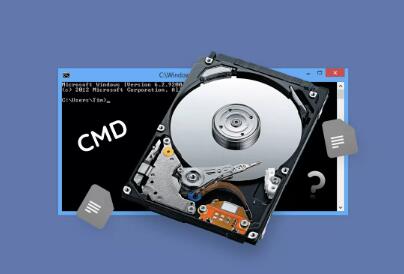Restoring data from a corrupted hard drive can be a complex process, but with the right steps, you can increase your chances of recovering important files.
1. Problem
Before you start the recovery process, it’s essential to understand the nature of the corruption:
Logical Corruption: This usually means that the file system is damaged, but the data itself may still be intact.
Physical Corruption: This is often due to hardware failure and can result in irretrievable data.

2. Initial Assessment
2.1 Check the Symptoms
Is the hard drive making unusual noises?
Are you unable to access files or folders?
Are you encountering error messages?
2.2 Stop Using the Drive
Once you notice signs of corruption, immediately stop using the drive. Continued use may overwrite recoverable data.
3. Data Recovery Options
There are several approaches to data recovery. Choose one based on your comfort level and the severity of the corruption.
3.1 DIY Software Solutions
Panda Assistant Data Recovery Software is designed to help users recover lost or deleted files from various storage devices, including hard drives, USB drives, memory cards, and more. Here are some key features and functionalities typically offered by such software:
User-Friendly Interface: Most data recovery software, including Panda, offers an intuitive interface that makes it easy for users, even those with limited technical knowledge, to navigate through the recovery process.
Deep Scanning: The software usually includes a deep scan feature that can search for recoverable files even after they have been deleted or the storage device has been formatted.
File Preview: Users can often preview recoverable files before deciding to restore them, allowing for more efficient recovery.
Multiple File Types Supported: Panda Assistant typically supports a wide range of file types, including documents, images, videos, and audio files.
Quick and Deep Scan Options: Users can choose between a quick scan for recently deleted files and a more thorough deep scan for older or more complex recoveries.
Selective Recovery: Users can select specific files or folders they wish to recover, rather than restoring everything, which helps save time and storage space.
Safety and Security: The software usually emphasizes secure recovery processes, ensuring that recovered files are not further corrupted or lost during the recovery process.
Multi-Platform Support: It may be available for various operating systems, including Windows and macOS, allowing broader usability.
Technical Support: Many data recovery solutions come with customer support or technical assistance for users who encounter issues during the recovery process.
Trial Version: Often, a trial version is available, allowing users to assess the software’s capabilities before making a purchase.
Steps to Use Data Recovery Software:
Download and install the software on a different drive than the one you are recovering.
Connect the corrupted hard drive to your computer.
Launch the software and select the corrupted drive for scanning.
Follow the prompts to begin the recovery process.
Review the recovered files and save them to a different storage location.
3.2 Command Line Tools
If you’re comfortable with command line interfaces, tools like chkdsk for Windows or fsck for Unix/Linux can help fix minor issues.
Windows Example:
Open Command Prompt as an administrator.
Type chkdsk X: /f (replace X with your drive letter) and press Enter.
Unix/Linux Example:
Open Terminal.
Type sudo fsck /dev/sdX (replace sdX with your drive identifier) and press Enter.
3.3 Professional Data Recovery Services
If DIY methods fail or if the drive has physical damage, consider professional data recovery services. These can be expensive but are often the most reliable option for critical data.
4. Prevent Future Data Loss
After recovering your data, take steps to prevent future issues:
Regular Backups: Use external hard drives, cloud storage, or NAS devices for regular backups.
Monitor Drive Health: Use tools like CrystalDiskInfo to keep an eye on your drive’s health status.
Safe Ejection: Always safely eject external drives before unplugging them.
Data recovery from a corrupted hard drive can be challenging but is often achievable with the right tools and methods. Always prioritize prevention strategies to protect your data in the future. If you’re ever in doubt, seeking professional help is the safest route to ensure your data’s integrity.
About us and this blog
Panda Assistant is built on the latest data recovery algorithms, ensuring that no file is too damaged, too lost, or too corrupted to be recovered.
Request a free quote
We believe that data recovery shouldn’t be a daunting task. That’s why we’ve designed Panda Assistant to be as easy to use as it is powerful. With a few clicks, you can initiate a scan, preview recoverable files, and restore your data all within a matter of minutes.
Subscribe to our newsletter!
More from our blog
See all postsRecent Posts
- Recovered go pro videos corrupt 2024-11-22
- How to restore deleted videos from computer? 2024-11-22
- How do i recover my photos? 2024-11-22










